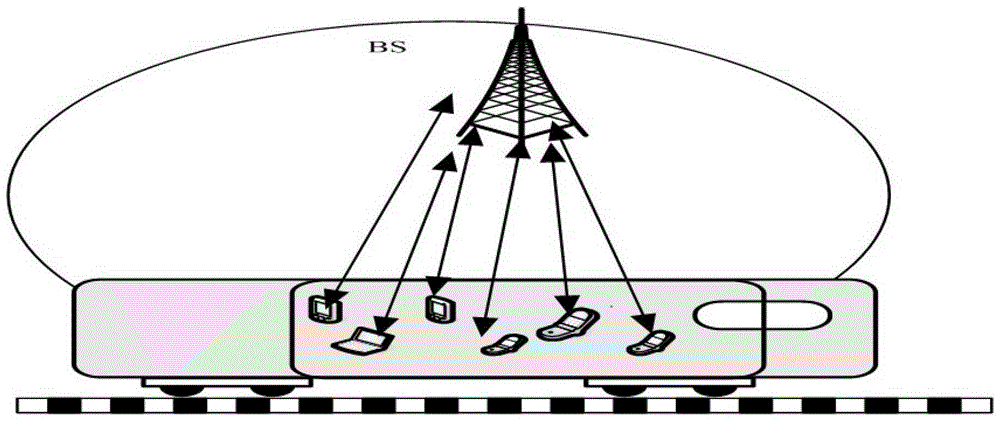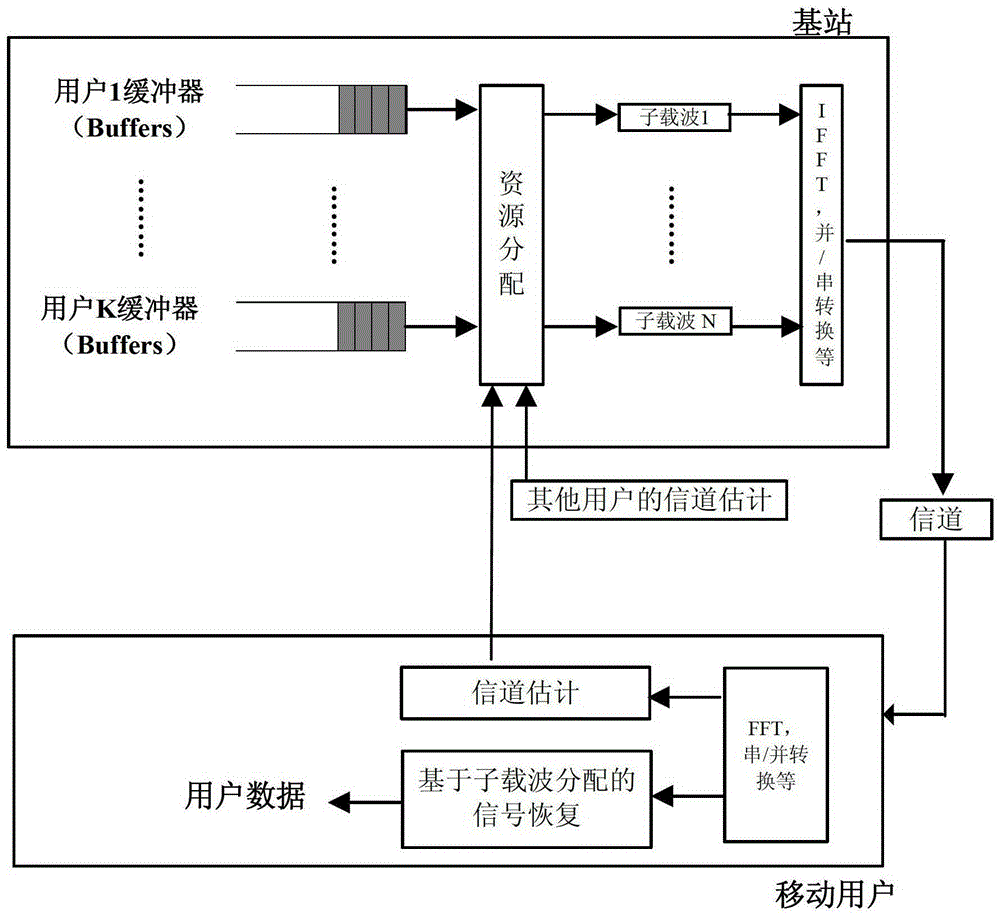Wireless resource allocation method of ofdma system in high-speed scene
A wireless resource and allocation method technology, applied in the transmission system, wireless communication, digital transmission system, etc., can solve the problems of high power consumption, inefficient resource allocation algorithm, waste of resources, etc.
- Summary
- Abstract
- Description
- Claims
- Application Information
AI Technical Summary
Problems solved by technology
Method used
Image
Examples
Embodiment Construction
[0042] Below in conjunction with accompanying drawing and embodiment the present invention will be further described:
[0043] Preferred embodiments are described in detail. It should be emphasized that the following description is only exemplary and not intended to limit the scope of the invention and its application.
[0044] Concrete realization process of the present invention is: figure 1As shown, the passengers on the train communicate directly with the base station on the roadside. Consider a single-cell cellular OFDMA system with K 1 delay tolerant users and K 2 delay-sensitive users, L={1,2,…,L} subcarriers, where each subcarrier can only be assigned to one user, define {C} ij =c k,l is the allocation matrix of subcarriers, if c k,l =1, then the lth subcarrier is assigned to user k, otherwise c k,l =0, the total transmission bandwidth is B. Usually, a data flow is usually a mixed data flow, that is, data packets constituting the data flow need to meet differe...
PUM
 Login to View More
Login to View More Abstract
Description
Claims
Application Information
 Login to View More
Login to View More - R&D
- Intellectual Property
- Life Sciences
- Materials
- Tech Scout
- Unparalleled Data Quality
- Higher Quality Content
- 60% Fewer Hallucinations
Browse by: Latest US Patents, China's latest patents, Technical Efficacy Thesaurus, Application Domain, Technology Topic, Popular Technical Reports.
© 2025 PatSnap. All rights reserved.Legal|Privacy policy|Modern Slavery Act Transparency Statement|Sitemap|About US| Contact US: help@patsnap.com



